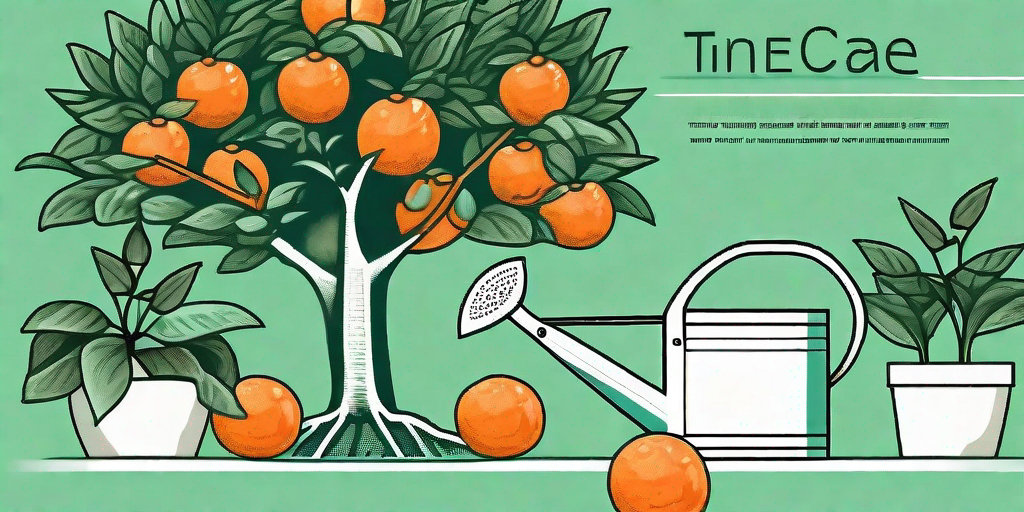
Welcome, citrus enthusiasts! If you've ever dreamed of growing your own tangerine tree, you're in the right place. This guide will take you through the juicy details of nurturing your very own citrus wonder. So, let's peel back the layers and squeeze out the secrets of tangerine tree care!
The Basics of Tangerine Trees
Before we dive into the nitty-gritty, let's get to know our subject a bit better. Tangerine trees, or Citrus reticulata if you want to impress your botanist friends, are a delightful addition to any garden. They're not just pretty to look at, but they also produce delicious, vitamin-packed fruits that can brighten up any salad, dessert, or cocktail.
Native to Southeast Asia, these trees love warm climates. But don't worry, even if you live in a cooler region, you can still grow a tangerine tree indoors. All you need is a sunny window and a bit of patience.
Types of Tangerine Trees
There are several types of tangerine trees available, each with its own unique characteristics. Some popular varieties include the 'Dancy', 'Clementine', and 'Satsuma'. The 'Dancy' is known for its rich, sweet flavor, while the 'Clementine' is loved for its easy-to-peel skin. The 'Satsuma', on the other hand, is a cold-hardy variety that can withstand temperatures as low as 20°F.
When choosing a variety, consider your climate, available space, and personal taste. After all, you'll be the one enjoying the fruits of your labor (pun absolutely intended).
Planting Your Tangerine Tree
Now that we've covered the basics, let's move on to the fun part: planting your tangerine tree. Whether you're starting from a seed or a young tree, the process is a rewarding journey of growth and discovery.
Starting from a seed can be a bit tricky, but it's a great way to witness the entire life cycle of your tree. If you're up for the challenge, here's a quick step-by-step guide:
- Extract seeds from a fresh tangerine and rinse them under cold water.
- Place the seeds in a damp paper towel and put it in a plastic bag.
- Keep the bag in a warm place until the seeds sprout, which usually takes about two weeks.
- Once the seeds have sprouted, plant them in a pot filled with well-draining soil.
If you'd rather skip the waiting game, you can start with a young tree from a nursery. This way, you'll get to the fruit-bearing stage much faster.
Choosing the Right Location
Whether you're planting your tree in the ground or in a pot, location is key. Tangerine trees love the sun, so choose a spot that gets at least six hours of sunlight each day. If you're growing your tree indoors, place it near a south-facing window for maximum sun exposure.
When it comes to soil, tangerine trees prefer well-draining, slightly acidic soil. If your soil is heavy clay or overly sandy, consider amending it with organic matter to improve its texture and nutrient content.
Caring for Your Tangerine Tree
Now that your tree is planted, it's time to roll up your sleeves and get to work. Caring for a tangerine tree involves regular watering, feeding, and pruning. But don't worry, it's not as daunting as it sounds. In fact, it can be quite therapeutic!
Watering your tree is crucial, especially during the first few years. The soil should be kept consistently moist, but not waterlogged. A good rule of thumb is to water deeply once a week, or more frequently during hot, dry periods.
Feeding Your Tree
Tangerine trees are heavy feeders, so they'll need regular doses of nutrients to produce those juicy fruits. Use a balanced citrus fertilizer and follow the package instructions for application rates and frequencies.
Remember, over-fertilizing can be just as harmful as under-fertilizing. Too much fertilizer can cause leaf burn and inhibit fruit production, so it's important to strike a balance.
Pruning Your Tree
Pruning is an essential part of tangerine tree care. It helps maintain the tree's shape, promotes air circulation, and encourages fruit production. The best time to prune is in late winter or early spring, before the new growth starts.
When pruning, remove any dead or diseased branches, as well as any branches that are crossing or rubbing against each other. Also, keep the center of the tree open to allow sunlight to reach all parts of the tree.
FAQs
- When will my tangerine tree start bearing fruit?
- Most tangerine trees start bearing fruit when they're about 3 to 6 years old. However, this can vary depending on the variety and growing conditions.
- Why are the leaves on my tangerine tree turning yellow?
- Yellow leaves can be a sign of several issues, including nutrient deficiencies, over-watering, or disease. If your tree's leaves are turning yellow, it's best to consult a local extension service or a knowledgeable nursery professional.
- Can I grow a tangerine tree from a store-bought tangerine?
- Yes, you can! However, keep in mind that the resulting tree may not produce fruit that's exactly like the one you started with. This is due to the complexities of plant genetics.
There you have it, folks! The juicy secrets to growing and caring for your own tangerine tree. With a bit of patience and care, you'll be enjoying your own homegrown tangerines in no time. Happy gardening!











